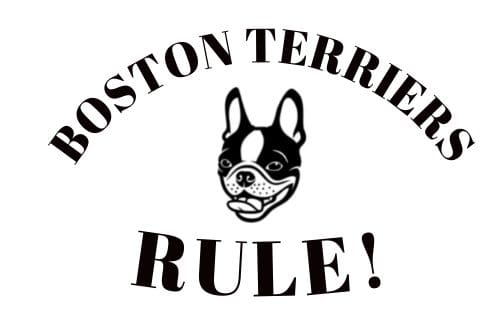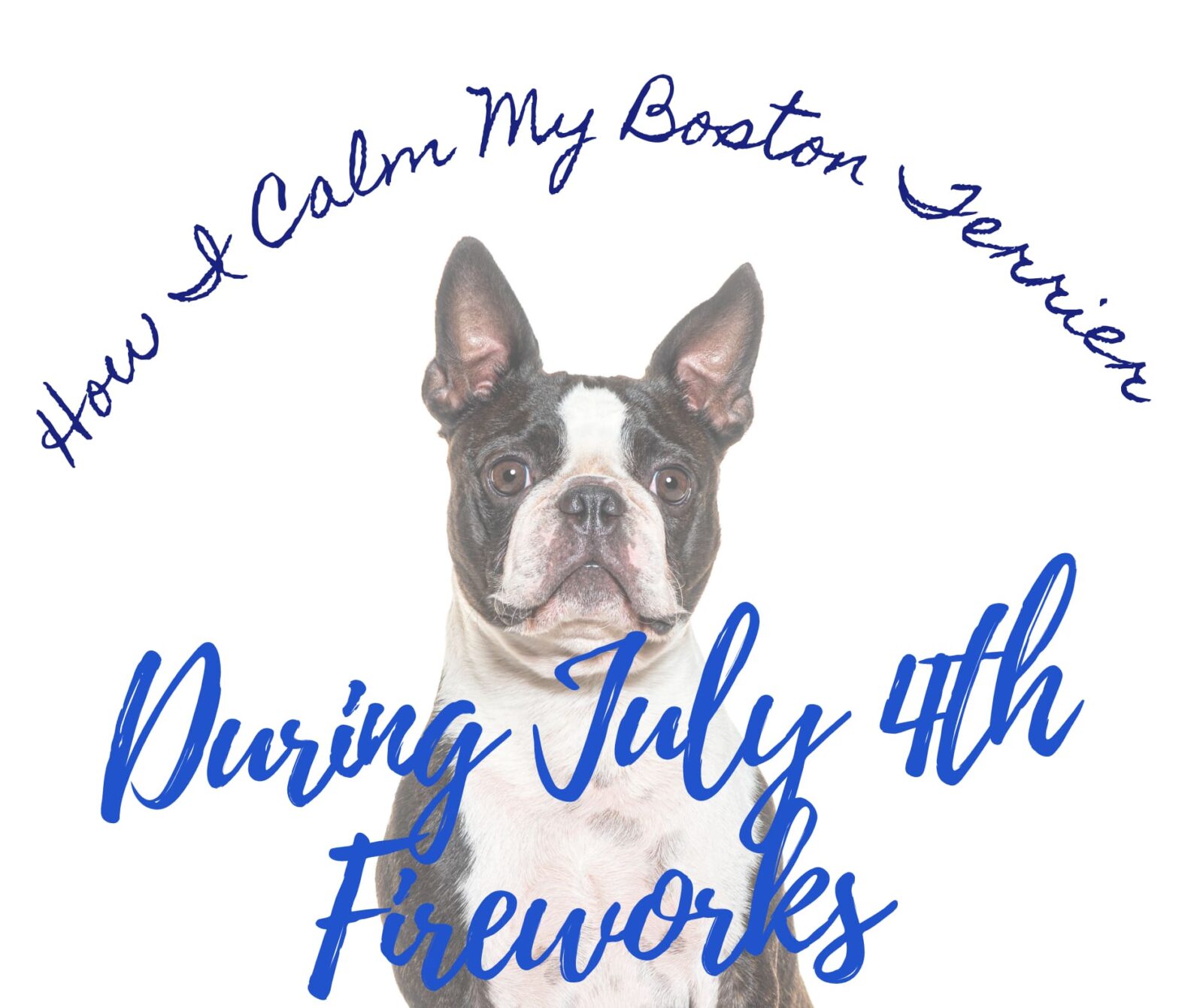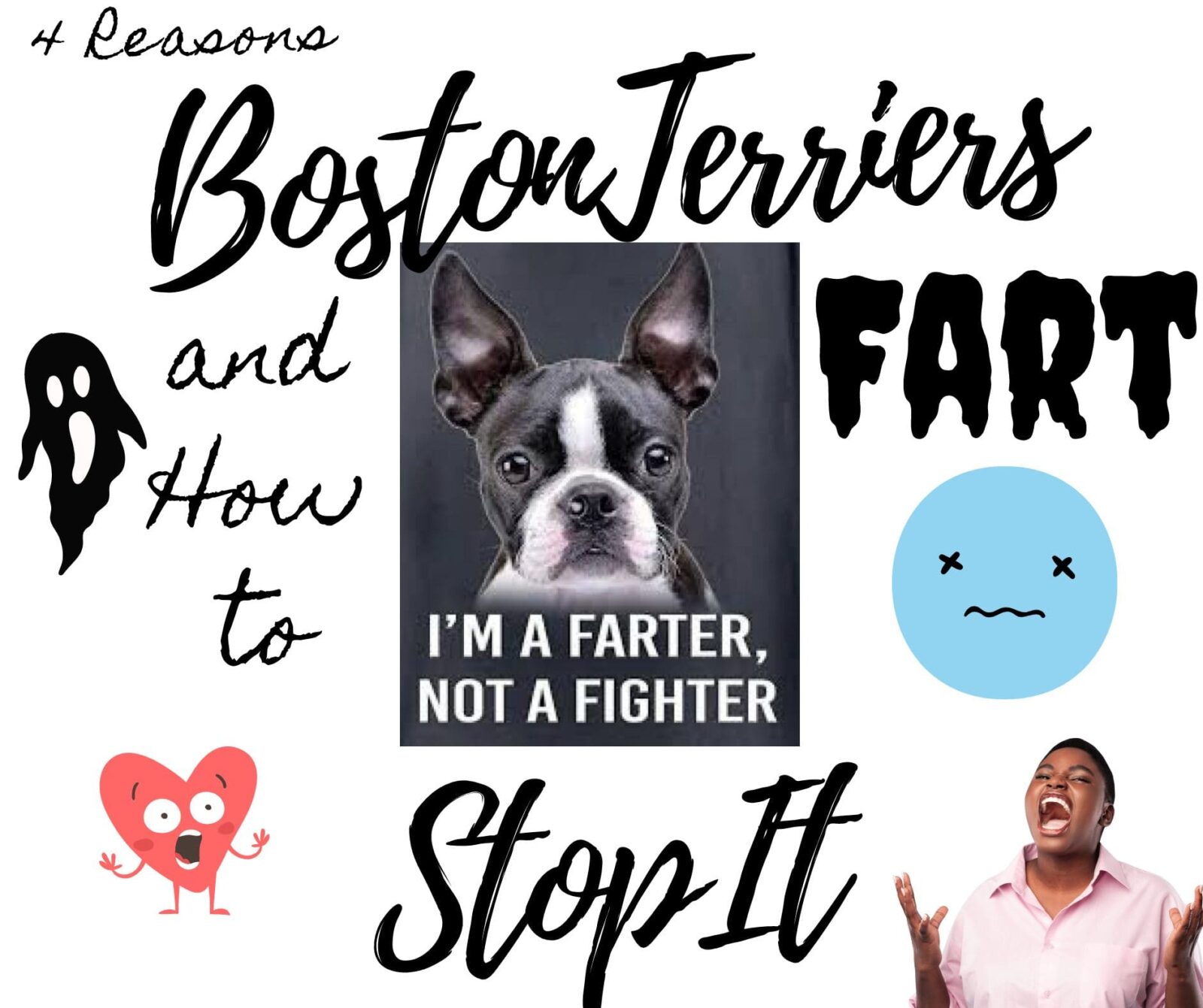As a long time Boston Terrier owner, as well as owning other breeds, I know all too well the challenges that come with the July 4th fireworks. The fireworks, while a beautiful spectacle for us humans, can be a nightmare for our pups. I’ve written about how to stop a nervous Boston Terrier from shaking, but fireworks are a whole different game to a dog. There is something about them that terrifies most dogs to the very core of their being.
My Boston Terrier, Nella, used to dread the 4th of July. The loud pops and bright flashes would send her into a frenzy, seeking refuge under the bed for hours on end. But over the years, I’ve learned a few tricks to calm my Boston Terrier, and make July 4th fireworks a bit more enjoyable for everyone.
I’ll get to how I calm my Boston Terrier in a bit…
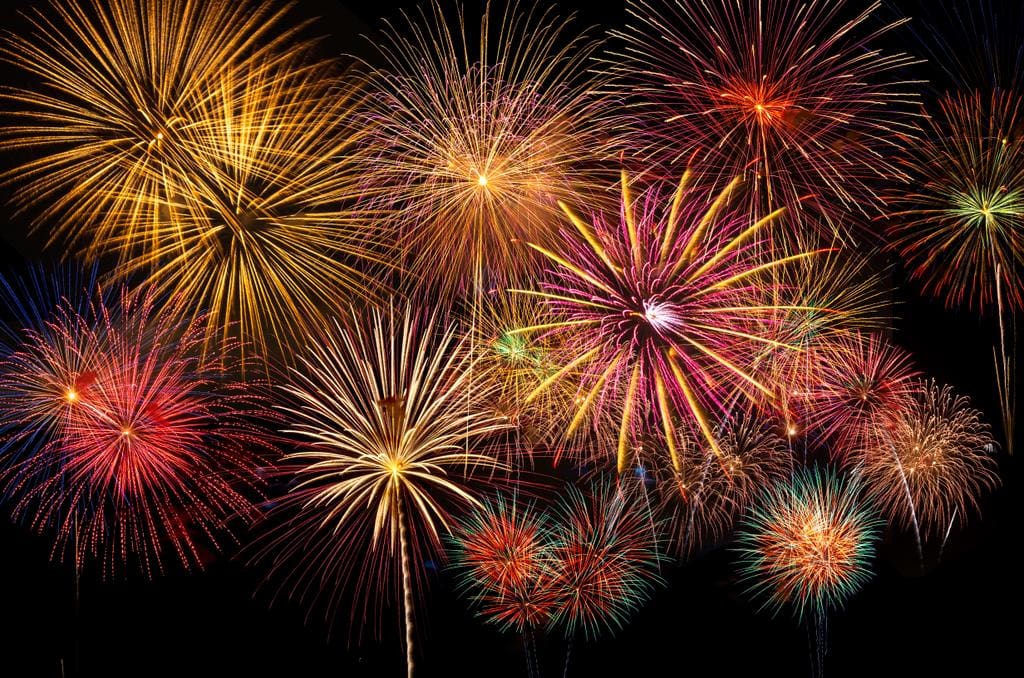
Understanding Your Boston Terrier’s Fear of July 4th Fireworks
Before diving into the strategies, it’s important to understand why Boston Terriers, and dogs in general, are so afraid of fireworks. Dogs have a much more acute sense of hearing than humans, making fireworks not just loud, but painfully so.
July 4th fireworks can be quite distressing for dogs, including Boston Terriers. Here’s what might be going through your Boston Terrier’s mind during fireworks:
Fear and Anxiety
Loud Noises: The sudden, loud bangs of fireworks can be startling and frightening. Dogs have much more sensitive hearing than humans, so the noise can be overwhelming.
Vibrations and Flashes: The bright flashes of light and vibrations that accompany fireworks can add to their fear and confusion.
Lack of Understanding: Dogs don’t understand what fireworks are or why they’re happening, which can lead to heightened anxiety.
Physiological Responses to Fear of Fireworks
Increased Heart Rate: Fear and anxiety can cause a rapid heartbeat.
Panting and Salivation: These are common signs of stress in dogs.
Shaking or Trembling: Physical manifestations of fear are common.
Dilated Pupils: This can be a sign of fear and stress.
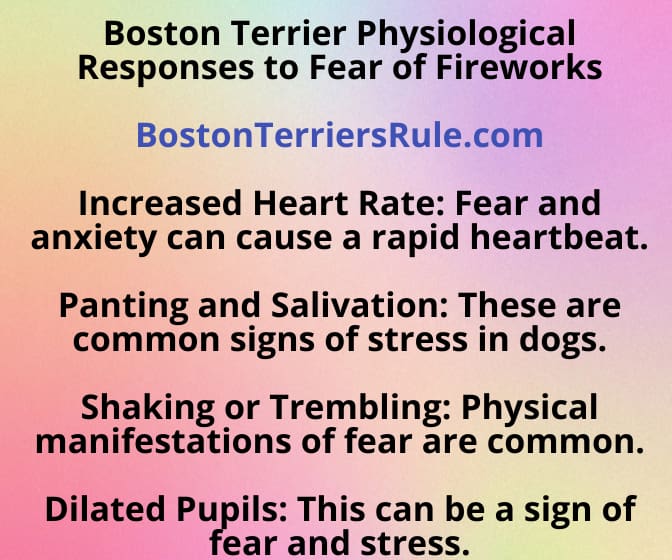
Behavioral Responses to Fear of Fireworks
Hiding: Your dog might seek a safe, enclosed space to hide from the perceived threat.
Pacing, or Restlessness: An anxious dog might pace around, unable to settle down.
Barking or Whining: Vocalizations can be a way for your dog to express distress.
Destructive Behavior: In extreme cases, a dog might chew or claw at objects or try to escape.
Clinging to You: They might seek comfort by staying close to you or other family members.
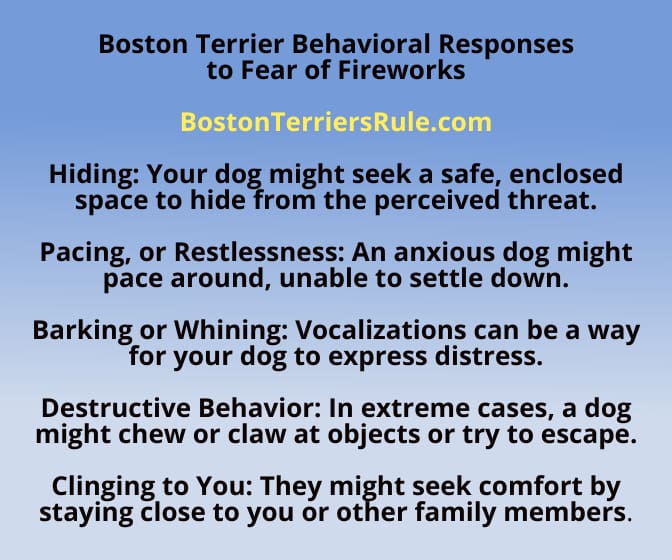
How I Calm My Boston Terrier During July 4th Fireworks
Create a Safe Space: Provide a quiet, comfortable area where your dog can feel secure.
Calming Music: Playing soft music can help drown out the sound of fireworks.
Comforting Presence: Stay close to your dog to provide reassurance.
Distraction: Engage your dog with toys or activities they enjoy.
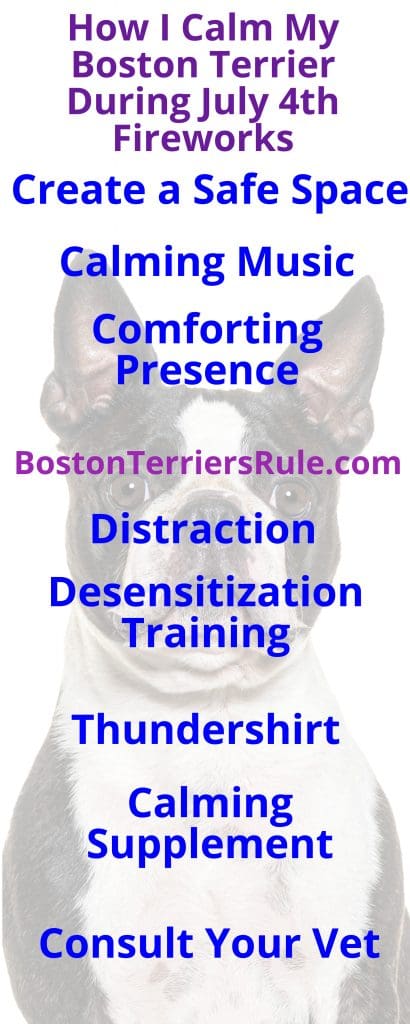
Desensitization Training: Over time, you can help your dog get used to loud noises by gradually exposing them to sounds at a low volume and rewarding calm behavior.
Thundershirt: Consider using a Thundershirt or similar product to provide a sense of security.
Consult Your Vet: In severe cases, your vet may recommend anti-anxiety medication.
Calming Supplement: …or try a natural calming aid like NaturVet Quiet Moments Calming Aid Dog Supplement. This is also handy for thunder, traveling, etc.
Understanding your dog’s perspective can help you provide the comfort and care they need during stressful events like July 4th fireworks.

Preparing Your Boston Terrier for 4th of July Fireworks
Preparation is key when it comes to managing your Boston Terrier’s fear of fireworks. Here’s what I do in the weeks leading up to 4th of July:
1. Create a Safe Space
Before the fireworks start, create a comfortable, safe space for your dog. This could be a crate, a cozy corner of a room, or a special dog bed. Make sure it’s a place where your dog feels secure and comfortable. Add some familiar items like blankets, toys, and perhaps a piece of clothing that smells like you to make it more inviting.
2. Desensitization and Counter-Conditioning
If you start early enough, desensitization can be an effective technique. This involves gradually exposing your dog to sounds that mimic fireworks at a very low volume and slowly increasing the volume over time. Pair this exposure with positive experiences, like treats and affection, to help your dog associate the sounds with good things. Counter-conditioning is similar but focuses on changing your dog’s emotional response to the sound of fireworks by creating a positive association.
During the 4th of July Fireworks Celebration
When the July 4th fireworks begin, it’s time to put your preparation into action.
3. Use a White Noise Machine or App
The constant hum of white noise can help mask the sounds of fireworks, making them less startling for your dog. There are many white noise machines available, or you can use a smartphone app designed for this purpose. This portable white noise machine has 25 different sounds, can be charged by USB or rechargeable battery, can be set on a timer or play continuously.
4. Keep Your Dog Inside
It’s best to keep your dog indoors during fireworks to prevent them from running away out of fear. Make sure all windows and doors are secure to keep them safely inside.
5. Calming Clothing
Consider using a calming vest or shirt for your dog. These garments apply gentle pressure to your dog’s body, which can have a calming effect. It’s like a hug that helps soothe their nerves.
6. Avoid Punishment
It’s important to understand that your dog’s fear is not a behavior that can be punished away. Punishing your dog for being scared will only increase their stress and fear.
7. After the Fireworks Once the fireworks have ended, it’s essential to give your dog time to calm down. Keep the safe space available for as long as they need it. Offer plenty of affection and reassurance.

Additional Tips on How to Calm Your Boston Terrier During July 4th Fireworks
Consult Your Vet: If your dog’s fear is severe, your veterinarian may be able to prescribe medication or recommend other treatments to help manage their anxiety.
Stay Calm: Dogs can sense their owner’s emotions. Try to stay calm and reassuring to help your dog feel more at ease.
Exercise: A good walk or play session before the fireworks start can help burn off some of your dog’s excess energy and make them more likely to relax.
By following these strategies, I’ve been able to significantly reduce my Boston Terrier, Nella’s, anxiety during July 4th fireworks. She now tolerates the festivities much better, and instead of hiding under the bed, she’ll often choose to curl up next to me, seeking comfort rather than escape.
Remember, every dog is different, so what works for one Boston Terrier might need some tweaking to work for your yours. Be patient, and with a bit of effort, you can help your Bostie enjoy this all American holiday as much as you do — after all, we don’t call our Boston Terriers America’s Gentleman for nothing!
https://www.akc.org/expert-advice/training/how-to-keep-your-dog-calm-during-fireworks
This post contains affiliate links. I earn from qualifying Amazon purchases.
